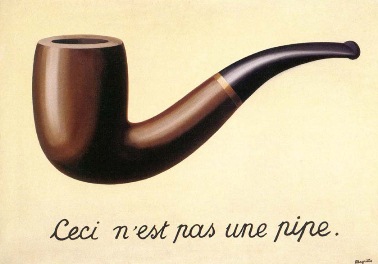
Surrealism
Surrealism is an art and cultural movement that developed in Europe in the aftermath of World War I in which artists aimed to allow the unconscious mind to express itself, often resulting in the depiction of illogical or dreamlike scenes and ideas.[1] Its intention was, according to leader André Breton, to "resolve the previously contradictory conditions of dream and reality into an absolute reality, a super-reality", or surreality.[2][3][4] It produced works of painting, writing, theatre, filmmaking, photography, and other media as well.
Years active
1920s–1950s
France, Belgium
Works of Surrealism feature the element of surprise, unexpected juxtapositions and non sequitur. However, many Surrealist artists and writers regard their work as an expression of the philosophical movement first and foremost (for instance, of the "pure psychic automatism" Breton speaks of in the first Surrealist Manifesto), with the works themselves being secondary, i.e., artifacts of surrealist experimentation.[5] Leader Breton was explicit in his assertion that Surrealism was, above all, a revolutionary movement. At the time, the movement was associated with political causes such as communism and anarchism. It was influenced by the Dada movement of the 1910s.[6]
The term "Surrealism" originated with Guillaume Apollinaire in 1917.[7][8] However, the Surrealist movement was not officially established until after October 1924, when the Surrealist Manifesto published by French poet and critic André Breton succeeded in claiming the term for his group over a rival faction led by Yvan Goll, who had published his own surrealist manifesto two weeks prior.[9] The most important center of the movement was Paris, France. From the 1920s onward, the movement spread around the globe, impacting the visual arts, literature, film, and music of many countries and languages, as well as political thought and practice, philosophy, and social theory.
Post-Breton Surrealism[edit]
In the 1960s, the artists and writers associated with the Situationist International were closely associated with Surrealism. While Guy Debord was critical of and distanced himself from Surrealism, others, such as Asger Jorn, were explicitly using Surrealist techniques and methods. The events of May 1968 in France included a number of Surrealist ideas, and among the slogans the students spray-painted on the walls of the Sorbonne were familiar Surrealist ones. Joan Miró would commemorate this in a painting titled May 1968. There were also groups who associated with both currents and were more attached to Surrealism, such as the Revolutionary Surrealist Group.
During the 1980s, behind the Iron Curtain, Surrealism again entered into politics with an underground artistic opposition movement known as the Orange Alternative. The Orange Alternative was created in 1981 by Waldemar Fydrych (alias 'Major'), a graduate of history and art history at the University of Wrocław. They used Surrealist symbolism and terminology in their large-scale happenings organized in the major Polish cities during the Jaruzelski regime and painted Surrealist graffiti on spots covering up anti-regime slogans. Major himself was the author of a "Manifesto of Socialist Surrealism". In this manifesto, he stated that the socialist (communist) system had become so Surrealistic that it could be seen as an expression of art itself.
Surrealistic art also remains popular with museum patrons. The Guggenheim Museum in New York City held an exhibit, Two Private Eyes, in 1999, and in 2001 Tate Modern held an exhibition of Surrealist art that attracted over 170,000 visitors. In 2002 the Met in New York City held a show, Desire Unbound, and the Centre Georges Pompidou in Paris a show called La Révolution surréaliste.
Surrealist groups and literary publications have continued to be active up to the present day, with groups such as the Chicago Surrealist Group, the Leeds Surrealist Group, and the Surrealist Group of Stockholm. Jan Švankmajer of the Czech-Slovak Surrealists continues to make films and experiment with objects.
Alleged precursors in older art[edit]
Various much older artists are sometimes claimed as precursors of Surrealism. Foremost among these are Hieronymus Bosch,[128] and Giuseppe Arcimboldo, whom Dalí called the "father of Surrealism."[129] Apart from their followers, other artists who may be mentioned in this context include Joos de Momper, for some anthropomorphic landscapes. Many critics feel these works belong to fantastic art rather than having a significant connection with Surrealism.[130]
André Breton
Other sources